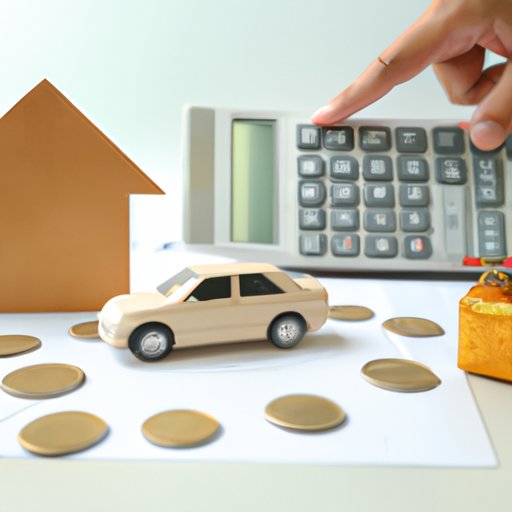Introduction
When purchasing a vehicle, car buyers may have the option to finance their purchase through a loan. A down payment is a lump sum of money that is paid upfront when financing a car. It is often used to reduce the overall cost of the vehicle and, in some cases, it is required by the lender. In this article, we will explore the pros and cons of making a down payment when financing a car, as well as provide general guidelines for how much should be put down and alternatives to making a down payment.

Exploring the Pros and Cons of Making a Down Payment when Financing a Car
Making a down payment when financing a car can have both advantages and disadvantages. Let’s explore each in more detail.
Advantages of Making a Down Payment
One of the main benefits of making a down payment when financing a car is lower monthly payments. By paying a larger amount up front, the overall loan amount is reduced, resulting in lower monthly payments. Additionally, making a down payment can also result in a lower interest rate since lenders view a higher down payment as a lower risk. Lastly, since the lender is taking on less risk with a higher down payment, they may be more likely to approve your loan.
Disadvantages of Making a Down Payment
One of the main drawbacks of making a down payment when financing a car is the loss of liquidity. Since you are using your savings to make the down payment, you may not have access to those funds until the loan is paid off. Additionally, if the value of the car depreciates faster than the loan is being paid off, you may end up “upside down” or with negative equity in the car. This means that you owe more on the loan than the car is worth.
How Much Should You Put Down When Financing a Vehicle?
When deciding how much to put down when financing a car, there are several factors to consider. Your credit score, loan term, vehicle price, and type of loan will all play a role in determining how much you should put down. Generally speaking, it is recommended to put down at least 20% of the vehicle’s purchase price. If you can’t afford to make a 20% down payment, then 10% is a good alternative. If neither of these options is feasible, you may be able to find a 0% down payment option.
Is it Necessary to Make a Down Payment When Car Financing?
Whether or not you need to make a down payment when financing a car depends on your individual situation. If you have a good credit score and are looking for a low loan amount with longer loan terms, then you may not need to make a down payment. However, if you are looking for a larger loan amount with shorter loan terms, then a down payment may be required. Regardless, there are still benefits to making a down payment, such as lower monthly payments, lower interest rates, and lower risk for lenders.
The Benefits of Making a Down Payment for Car Financing
As mentioned previously, making a down payment when financing a car can have a variety of benefits. One of the primary benefits is lower monthly payments. This is because a larger down payment reduces the overall loan amount, resulting in lower monthly payments. Additionally, a larger down payment can result in a lower interest rate since lenders view a higher down payment as a lower risk. Lastly, a higher down payment lowers the risk for the lender since they are taking on less risk with a larger down payment.
What Are the Alternatives to Making a Down Payment on a Car Loan?
If you are unable to make a down payment when financing a car, there are several alternatives available. One option is to use the trade-in value of your current vehicle as a down payment. Another option is to enlist the help of a co-signer on the loan, which may help you qualify for a lower interest rate. Lastly, leasing a vehicle is another option, as many leases do not require a down payment.
Conclusion
In conclusion, making a down payment when financing a car can have a variety of benefits, including lower monthly payments, lower interest rates, and lower risk for lenders. However, there are also drawbacks to making a down payment, such as the loss of liquidity and the possibility of negative equity. Ultimately, whether or not you should make a down payment depends on your individual situation. If you are able to make a down payment, then it is recommended to put down at least 20%. If that is not feasible, then 10% is a good alternative. If neither of these options is possible, then you may be able to find a 0% down payment option. Lastly, if you are unable to make a down payment, there are several alternatives available, such as trade-in value, co-signers, and leasing.
(Note: Is this article not meeting your expectations? Do you have knowledge or insights to share? Unlock new opportunities and expand your reach by joining our authors team. Click Registration to join us and share your expertise with our readers.)
